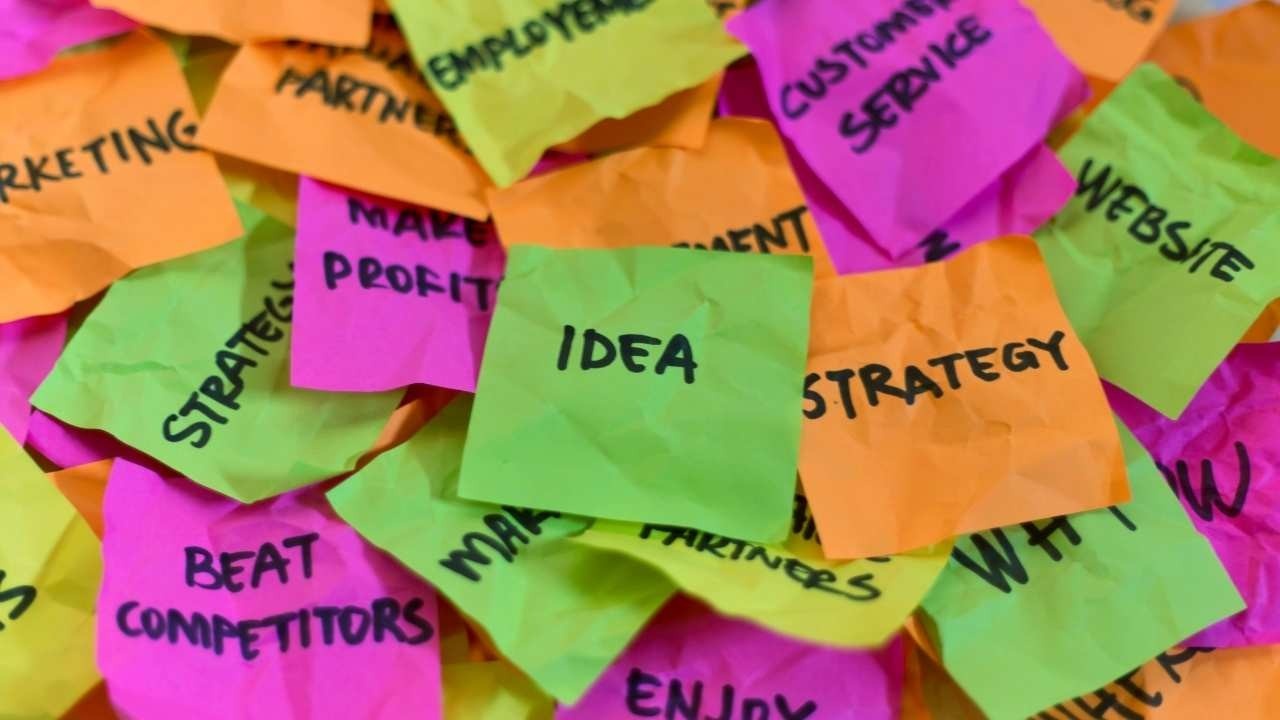
5 Things All New Business Owners Need to Build their Business
Aug 10, 2022by Kathryn Taylor
Building your own business is arguably one of the most rewarding journeys you can take - AND one of the most overwhelming. Often, I see women entrepreneurs getting stalled out, not because of their product, but because they get overwhelmed by the number of decisions they need to make.
Things like:
- What do I need first - a website or a Facebook page?
- How do I build a website without breaking the bank?
- Why does the government write everything in accountant speak when I’m just trying to figure out how to register an LLC?
- Do I really need to keep $10,000 in a business account to avoid bank fees?
- Why is no one buying my product?
You get the idea.
Over the years, I’ve had the opportunity to work with dozens of small startups. Here are the five things that I’ve found every small business needs and some guidance to help you get started.
A Business Entity
Setting up a legal entity is easier than you think, and it can protect you legally as well as help you keep your finances and business expenses organized from the start.
If you’re located in the United States, there are a few types of legal entities that you can use to set up your company. The most common are sole proprietorship, partnership, cooperation, or a Limited Liability Company (LLC). You can learn more about the various legal designations here.
For most business builders, an LLC is a solid choice. Your personal assets will be protected and you’ll be able to write off any business expenses in your taxes. LLCs are also easy and affordable to set up. The main downside to going the LLC route is that most run through individual states. If you move or find most of your business out of state, you may need to create a new LLC.
If you’re operating outside of the United States, you’ll want to research the best designation for your small business. Canada has similar designations to the United States.
I recommend consulting with an accountant before you set up any type of business entity. They can assess your personal situation and direct you to the best option.
A Bank Account
Once you have a business entity, you’ll be able to set up a business bank account. Although this isn’t essential for some types of businesses, it helps create a better system for separating business and personal expenses.
In the United States, depending on the type of business you’ve created, you will be able to set up a business account using your social security number. If you have a partnership, you will need an Employer Identification Number (EIN) to set up a bank account.
Many large banks will require you to carry a high balance or charge fees for a business account. Local banks or credit unions are often more friendly to small businesses.
NOVO bank is an online bank specifically designed for small businesses. Their app makes it easy to deposit checks and you can transfer money directly from the account to pay invoices or yourself. Currently, they have no minimums and no fees for business checking accounts. And no, we are not sponsored by them! This is an unbiased endorsement.
A Platform to Build Your Community
The best way to sell your product or service is to build a community. Okay now say it with me: Build. A. Community! A community helps you build a relationship with your audience. You can share your expertise and build trust and maybe even more importantly, you start to understand what the community really wants and needs. Often our great product ideas, aren’t actually what the community wants. Taking time to build and listen to your community will actually save you money in the long run.
It’s easy to feel the pressure to be on all of the social channels. Ultimately, you’ll feel overwhelmed if you go that route. Choose one or two places to invest. You can always add more later.
So how do you know where to build your community? Look at the intersection of what you’re excited about and where your audience will engage. Your options are Instagram, Facebook, Facebook groups, YouTube, LinkedIn, starting a podcast, starting a blog, hosting webinars, or a combination of platforms.
Keep in mind that when building a business, the ultimate goal of your social platform is to sell your products. Whichever social platform you use, you want to find a way to gather email addresses. Contrary to popular belief, email marketing is not dead and it actually has the greatest return on investment of any strategy. Platforms like Mailchimp make it easy to get started with email marketing.
A Website with a Clear Message
All business builders need a simple website with a clear message. This is where I often see people getting stuck or spending way too much money on the wrong things.
Although design matters, your message is actually much more important. Much, MUCH more. A good website should tell potential customers exactly what problem you solve for them in 7 seconds or less. The first line on your website should clearly articulate what you do. Too many people try to get clever when writing copy and wonder why no one is buying their product. Clarity sells! When people understand exactly how you solve their problem, they will buy.
Here’s a quick example of three website headers from triathlon coaches (found through a quick google search).
Enhancing Lives through Endurance Sports
Verses
Helping Triathletes Get Faster
If your goal is to get faster, which coach will you choose? Although “enhancing lives through endurance sports” may happen through coaching, it doesn’t actually tell me anything about what I’ll get as a customer.
In a future article, we’ll break down how to write good copy for websites, but for now, focus on creating an opening line that makes it very clear to your potential customer what you do.
When it comes to design, websites are easier than ever to build. I personally am a big fan of Squarespace. Their templates make design easy for anyone to build a nice clean website. They handle all of the backend updates, give you reports on analytics, and make domain setup easy. They also have options for e-commerce and memberships.
Wix is another easy-to-build site, but they don’t seem to have the full business suite of integrations that Squarespace offers.
Of course, WordPress is free, open-source software – but don’t be fooled by the word free. You’ll end up paying for any plugins or form builders that you might need in order to build your website. You’ll also need to manage updates to any of those plugins on a monthly basis. If you do want to go the WordPress route, you can easily build a site with a drag-and-drop editor like elementor.
A Product with a Sales Plan
The only way to make money in a product-based business is to sell things. One of the places that people get stuck is in creating the perfect product. For all of you perfectionists out there, make this your mantra — you’re not going to create the perfect product the first time around. You actually may not even create the right product on your second or third time. As you work with your community, you’ll learn what they need and your product will become better — or you may scrap it altogether because you find that what your community needs is something completely different.

When you’re creating your product, find the balance of creating good value for people but not spending so much time on it that starting over would mean you’ve lost hundreds of hours of work.
Once you have your product, then you need to sell it. This can be the hardest part for many of us. It can feel uncomfortable and most people resort to a few vague social media posts when selling their products.
That’s why it’s best to create a sales plan. Most people need to see your product 21 times in order to buy. You’ll need a combination of social media posts, emails, and some sort of audience engagement or way to connect with your audience. Audience engagement can be done through things like free consultations, webinars, or if you sell a physical product – having good product reviews or samples is extremely helpful when possible.
When you are in a sales cycle it’s going to feel aggressive and for many folks, very uncomfortable. Part of selling is believing in ourselves and the value of our product while stepping into the discomfort of selling. That being said, there is a balance. If all you do is sell, you’ll fatigue your audience.
Think about it: if 80% of the content you create is focused on building your brand and 20% is focused on selling your product, the 20% that is a sell needs to have a very clear plan and call to action.
Ideally, you’ll sit down and map out your year (or at least your quarter) knowing when you’ll be pushing out your sales and when you’ll be focused on building your brand. If you’re a person who dreads sales, having a plan will give you the freedom to spend a big part of your time brand building while still meeting your goals.
If you’re interested in learning more about building your business, join us at our Outspoken Women in Endurance Sports Summit this year. We’ll spend three days helping you put together a plan of action and you’ll network with other small business owners like yourself.
Make your inbox Feisty
Get the latest in women's sports & performance news every week with The Feist. Read a sample newsletter here.
We hate SPAM. We will never sell your information, for any reason.

